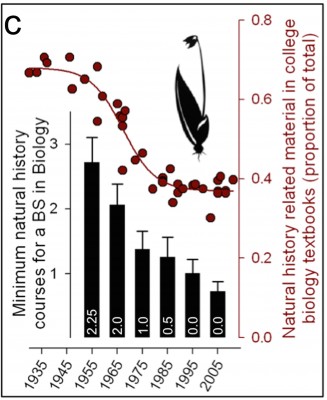The natural history champions of yesteryear aroused fascinations with ants, butterflies, and stream beds. Their infectious obsessions were more than idling interests: Silent Spring warned of DDT’s dangers.
But long after the field’s pioneers stoked America’s eco-consciousness, contemporary practitioners are warning that the specialty is shriveling like a salted slug. Herbaria are being consolidated. Kids don’t chase butterflies–they execute pedestrians on video games. Natural history is history as far as some textbooks are concerned.
“There are no grants for discovering new butterflies any more. But now we have this tremendous infusion of disciplines and technologies that allow us to look at natural history from different perspectives.”
Without a collective interest in how the natural world works, how will we usher humanity through the global warming epoch? Where will we find new tricks for feeding the growing billions?
These fears might be overblown. A team of biologists is questioning the very adage that natural history is in its death throes. If these revolutionaries are right, then natural history, that oft-intangible field that observes and describes the natural world, is alive and well. It’s just harder to see.
Many of today’s natural historians are camouflaged, the argument goes, cloaked in white lab coats in sterile laboratories. They aren’t plodding through old growth forests and writing books about what they see; they’re peering into electron microscopes and describing viruses and gut ecosystems in scientific papers. It is biology’s ballooning obsession with all things micro that’s letting us see HIV; that’s relieving chronic gastro patients with fecal transplants.
“There’s a cottage industry around whining about the decline of natural history,” says Joshua Tewksbury, a University of Washington natural history professor. “There are no grants for discovering new butterflies any more. But now we have this tremendous infusion of disciplines and technologies that allow us to look at natural history from different perspectives.”

Tewksbury helped launch the Natural Histories Project, which ran a series of National Science Foundation-funded workshops in 2011 designed to define contemporary natural history–and chart its future. The ideas that blossomed during them provided fodder for a journal article published last week in BioScience. It mulls over natural history’s place in 21st-century science and society.
“I think it’s a really exciting time to be a naturalist,” Tewksbury says. “But we’re trying to figure out what that means.”
The team tracked a half-century plunge in the number of natural history-related courses required for American biology degrees. They also quantified the drop in the amount of natural history coverage in introductory biology textbooks.
But the team sees reason for hope–it says natural history has metamorphosed as biology, technology, and society have evolved.
“Technology is expanding the reach of the naturalist, uncovering a new world of opportunities at the microbial scale,” the scientists write. “Microbial cells outnumber human cells 10:1 in the human body and contribute to defense, metabolism, and nutrition. The amount that is unknown in this field is truly vast.”
Tewksbury doesn’t deny that the world needs more traditional natural history–more museums, more collections, and more funding for field trips. But he posits that Americans are no longer merely interested in the natural world around them. They’re becoming obsessed with the natural world inside them.



